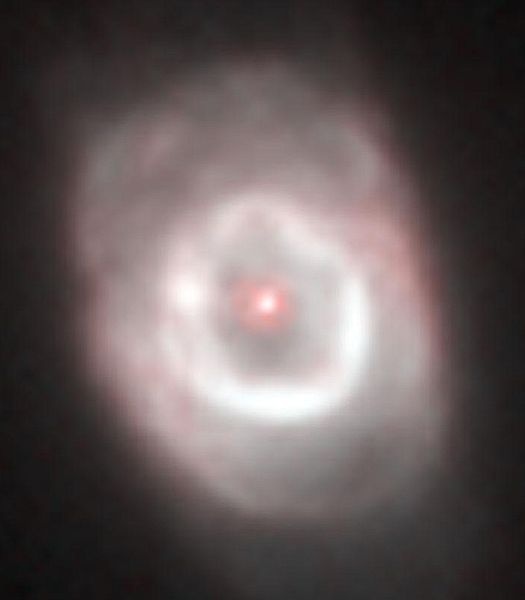NGC 6790 is a planetary nebula located in the constellation Aquila, the Eagle, situated around 7,000 light-years from Earth. Discovered in 1787 by the renowned German-born British astronomer Sir William Herschel, this nebula offers a fascinating glimpse into the final stages of stellar evolution.
The constellation Aquila lies near the celestial equator, making it visible from both hemispheres. Known for its rich star fields and several deep-sky objects, Aquila is home to several other notable celestial features, making it a key area of study for astronomers.
Physical Characteristics
Planetary nebulae like NGC 6790 are formed when stars of low to intermediate mass reach the end of their life cycle. These dying stars shed their outer layers, forming a glowing shell of ionized gas that is heated by the intense radiation of the hot, exposed core of the star. NGC 6790, like many planetary nebulae, has a roughly spherical shape, although its outer regions appear faint and extended, likely due to the nebula’s interaction with the surrounding interstellar medium.
At the heart of NGC 6790 is a white dwarf, the remnant core of the star that once powered the system. This white dwarf has an extremely high surface temperature of around 85,000 K, which is responsible for illuminating the surrounding gas and causing it to glow brightly in the visible spectrum. The light we see is primarily due to the emission lines of ionized elements such as hydrogen, oxygen, and nitrogen.
Despite its physical size, the nebula has a small apparent size in the night sky, spanning only a few arcseconds, not arcminutes. This makes it appear relatively small and compact when viewed through a telescope.
Evolutionary Stage
NGC 6790 represents a late stage in the life of its central star. As the star has already shed its outer layers, the remaining core will continue to cool and fade over time. The star’s transformation into a white dwarf marks the end of its active life, but the nebula it created will persist for thousands of years before dispersing into the surrounding space.
The process by which planetary nebulae like NGC 6790 form is part of a larger stellar life cycle, contributing material back into the galaxy. These nebulae enrich the interstellar medium with heavier elements like carbon, nitrogen, and oxygen, which are later used to form new stars and planetary systems. In this sense, planetary nebulae play a key role in the ongoing chemical evolution of the universe.
Observation
Observing NGC 6790 requires a moderate-aperture telescope due to its small size and faintness. A narrowband filter, such as an OIII filter (which enhances the emission of doubly ionized oxygen), is highly recommended to increase the visibility of the nebula’s specific emission lines. These filters help to bring out the details of planetary nebulae by isolating the wavelengths of light emitted by ionized gas.

NGC 6790 is best observed during the summer months in the Northern Hemisphere, particularly from late May through early September, when Aquila is high in the sky. The constellation Aquila, a summer constellation, is most prominent during these months, providing the best opportunity for astronomers and stargazers to view the nebula. It can also be observed from the southern hemisphere during the same months. Observers should seek dark sky locations away from light pollution to improve visibility and enhance the overall viewing experience.
Despite its small size, NGC 6790 is a rewarding target for experienced amateur astronomers with the right equipment, offering insights into the beautiful yet fleeting phase of a dying star’s life.



